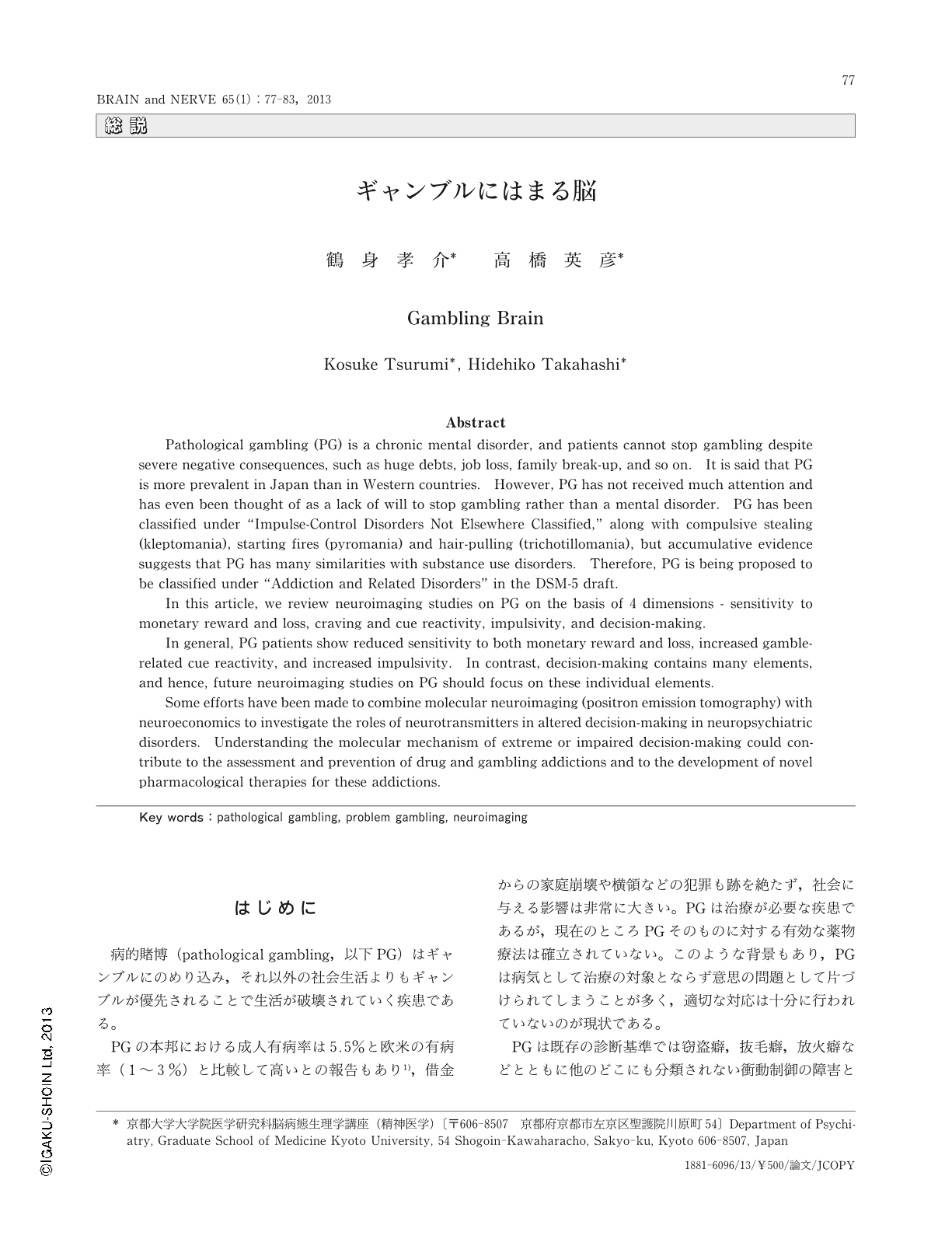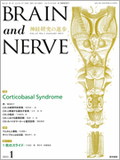Japanese
English
- 有料閲覧
- Abstract 文献概要
- 1ページ目 Look Inside
- 参考文献 Reference
はじめに
病的賭博(pathological gambling,以下PG)はギャンブルにのめり込み,それ以外の社会生活よりもギャンブルが優先されることで生活が破壊されていく疾患である。
PGの本邦における成人有病率は5.5%と欧米の有病率(1~3%)と比較して高いとの報告もあり1),借金からの家庭崩壊や横領などの犯罪も跡を絶たず,社会に与える影響は非常に大きい。PGは治療が必要な疾患であるが,現在のところPGそのものに対する有効な薬物療法は確立されていない。このような背景もあり,PGは病気として治療の対象とならず意思の問題として片づけられてしまうことが多く,適切な対応は十分に行われていないのが現状である。
PGは既存の診断基準では窃盗癖,抜毛癖,放火癖などとともに他のどこにも分類されない衝動制御の障害といういわば「ゴミ箱」的な区分の中に分類されている。しかしPGの診断基準の項目には物質依存症の渇望,耐性,離脱症状などと相応するものが多く,また近年PGと物質依存症との類似性を指摘する知見が集積されてきている。このため近々改訂予定であるアメリカ精神医学会による診断基準DSM-5草案においては初めて依存症の項目に加えられており,臨床・研究・社会的な観点からも注目を集めている。
本稿ではPGに関する脳画像研究の知見を,「報酬と罰への感受性」,「渇望や手掛かり刺激への反応」,「衝動性」,「意思決定」の4項目に分類し,概説する。
なお,本文中のPG群とはDSM-ⅣやICD-10といった操作的診断基準で診断された群を指し,一方で問題賭博者群(problem gambler群,以下PRG群)とは質問紙調査で問題賭博が明らかになったものを指す。
Abstract
Pathological gambling (PG) is a chronic mental disorder, and patients cannot stop gambling despite severe negative consequences, such as huge debts, job loss, family break-up, and so on. It is said that PG is more prevalent in Japan than in Western countries. However, PG has not received much attention and has even been thought of as a lack of will to stop gambling rather than a mental disorder. PG has been classified under "Impulse-Control Disorders Not Elsewhere Classified," along with compulsive stealing (kleptomania), starting fires (pyromania) and hair-pulling (trichotillomania), but accumulative evidence suggests that PG has many similarities with substance use disorders. Therefore, PG is being proposed to be classified under "Addiction and Related Disorders" in the DSM-5 draft.
In this article, we review neuroimaging studies on PG on the basis of 4 dimensions - sensitivity to monetary reward and loss, craving and cue reactivity, impulsivity, and decision-making.
In general, PG patients show reduced sensitivity to both monetary reward and loss, increased gamble-related cue reactivity, and increased impulsivity. In contrast, decision-making contains many elements, and hence, future neuroimaging studies on PG should focus on these individual elements.
Some efforts have been made to combine molecular neuroimaging (positron emission tomography) with neuroeconomics to investigate the roles of neurotransmitters in altered decision-making in neuropsychiatric disorders. Understanding the molecular mechanism of extreme or impaired decision-making could contribute to the assessment and prevention of drug and gambling addictions and to the development of novel pharmacological therapies for these addictions.

Copyright © 2013, Igaku-Shoin Ltd. All rights reserved.


